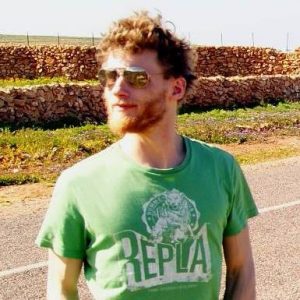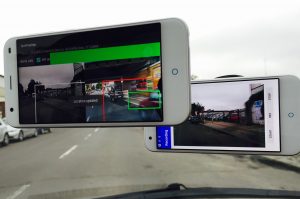Digitalising Schöneberg
Berlin is not only a hub of techno, arts and bohemia lifestyle; it’s a city where movement never stops. Responding to infrastructural challenges,
a number of Berlin-based entrepreneurs are constantly looking for
smart city solutions. Including plazz.

Hannes Fasching
Berlin, startups and smart parking: a chat with Hannes Fasching – a person standing at the very heart of the magic algorithm of plazz.
Quick intro: who you are and what do you do?
I am a video algorithms developer, born and raised in the middle of Austria. When I’m not in my autistic programming mode, I enjoy life outdoor: taking care of my garden, go Mountain Biking and Paragliding.
Time management is one things I’m not proud of. Very honestly, I should have started a trip to Portugal with my good old camper two days ago. And I am still in Graz.
Tell us how you have found plazz. Or did it find you?
We kind of found each other (laughs). They have found me on a geeky developers portal and I got interested in the project straight away, both because of the idea and a beautiful location – Berlin. I like changes and working for plazz is ideal: once a month I come to see the team and can combine that with a few Berlin-exploration days.
So what exactly are you responsible for?
Putting it very simple: I´m a trainer. I teach mobile phones to understand environment around them.
Back to the IT. How does plazz technology work?
 We put a mobile phone in a car, turn the camera on and let our app analyse incoming video data directly on the mobile device. A detection app translates images to weird numbers, which at first don’t make any sense. These numbers, however, create a pattern that is understandable for an advanced computer or a smartphone.
We put a mobile phone in a car, turn the camera on and let our app analyse incoming video data directly on the mobile device. A detection app translates images to weird numbers, which at first don’t make any sense. These numbers, however, create a pattern that is understandable for an advanced computer or a smartphone.
We train the app to understand, how a car looks like. Every time the app finds a car, it remembers some features and improves over time. Of course we cant just leave it and wait until it learns everything itself. We have to put some magic in it: optimizing the app to keep the phone cool, position the mobile correctly and take care of external interfaces such as sun rays or rain.
That means that to collect the data all you need is a smartphone?
Yes. The mobile devices that detect empty parking spots are pretty simple smartphones. Very honestly, I could have never promised that the detecting app would ever work on low-end mobiles. Surprisingly it does!
The app has been tested in Schöneberg. Why?
Schöneberg is an ideal playground for our app – our headquarter is located at the EUREF-Campus, which is a melting pot of environment-friendly and sustainable ideas.
There is a number of transport apps available. How does plazz app benefit the society?
There are many reasons. The driver saves time, because he can directly drive to the nearest parking spot available. And the climate is happy as less Carbon dioxide is emitted. It also helps local authorities to identify bottlenecks in the carpark-situation. Finally, it shows the potential of how small building-blocks like our app can contribute to the protection of the environment.
 BLOG
BLOG